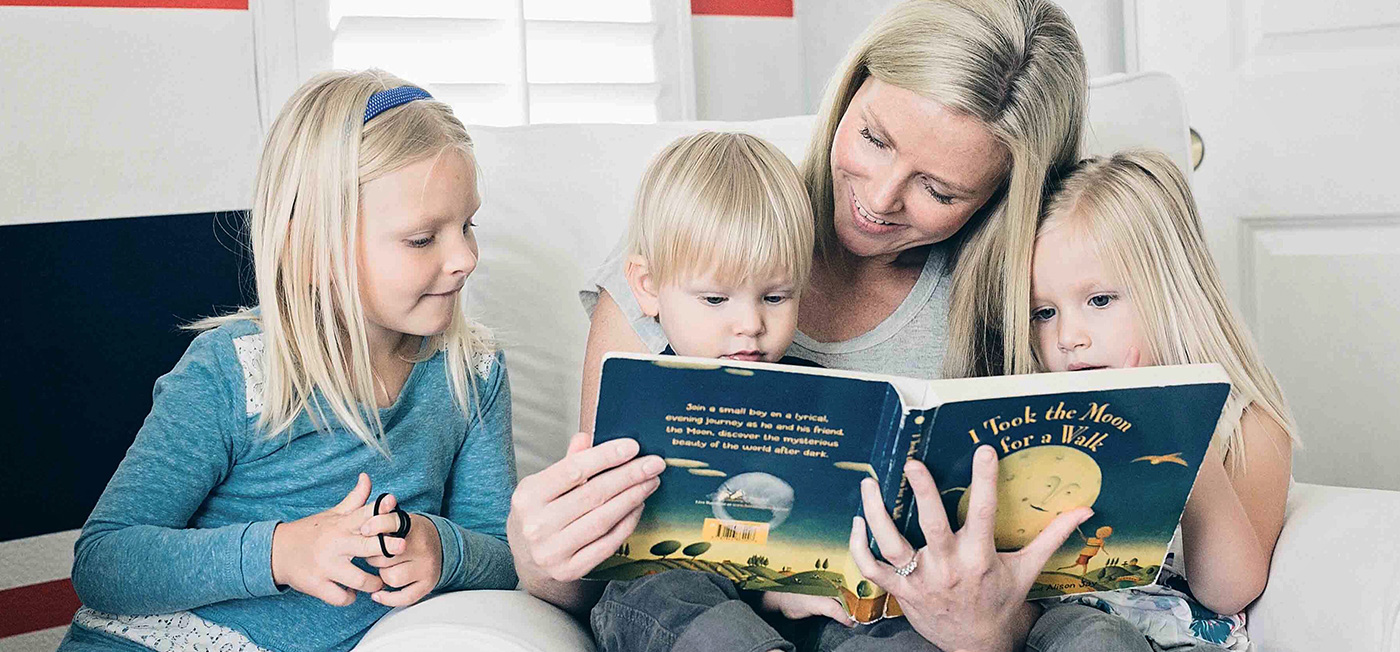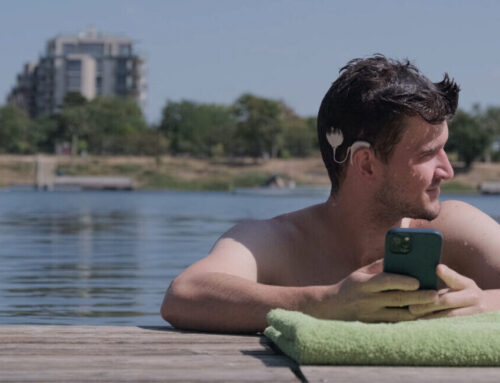Learning to read quickly with simple excercises
Reading and writing are focal points of elementary school and the basis of later education. The good support of hearing-impaired classmates includes optimally adjusted hearing aids, exercises for sound differentiation and the right motivation for reading.

“Reading and writing are minimum requirements today,” says Ursula Baatz, scientific curator of the Dürnstein symposium on education. She predicts that people without advanced reading and writing skills will have increasing difficulty to find their place in the labor market. Essentially, further education and trainings are based on literacy. And literacy is important in everyday life and leisure as well.
Joanna Shepherd is a head of the rehabilitation team at MED-EL. She points to the close interaction between auditory language comprehension, reading comprehension and narrative skills. “Language, organizing information, verbal memory and cognitive comprehension are the skills a child needs when engaging with a story – whether they’re hearing, reading, telling, or writing it.”
Auditory memory can also be impaired, regardless of one´s hearing ability. “But I already notice that many hearing-impaired children need more repetition,” explains Michaela Velissaris, a teacher for hearing-impaired students in Vienna. “Sound differentiation develops in normal-hearing children at preschool age. When children have a problem with hearing development, they may not yet be able to consciously differentiate and match sounds.”
Different learning methods
Nicole Supper teaches at one elementary school in Vienna. “The teacher decides which teaching method the class will use for reading. This also depends on the particular primer in use.” There is a distinction between analytic and synthetic methods. For example, the classic spelling method belongs to the synthetic methods: the children first learn letters, which are then used to put the initial words together. “I had a child who read “Em-o-em ” instead of “Mom” for a long time,” smiles the schoolteacher. That’s why consonants are now pronounced without a sounding vowel when spelling, so for “M” it’s not “Em” but rather “Mmm.”
Synthetic teaching approaches also include phonetic methods that are primarily oriented to the sounds of spoken words. The example of this would be the initial sound method: the letters are learned using a word that begins with the corresponding sound: “M for mouse.” What the synthetic methods have in common is their progression, which is the blending of individual letters or sounds into coherent reading.
On the other hand, analytic methods take whole words or short sentences as a starting point. For example, comparing the words grandma and grandpa to recognize letters. “This is a method for higher-performing children, which is why few classes take this approach,” Supper explains. “Phonics methods are used most often, but also different approaches in combination.”
From reading to understanding
“Children with hearing impairment may benefit from holistic methods, but most children with a cochlear implant also have no problem with a phonics-based approach. Ultimately, matching phonemes to letters cannot be skipped,” Velissaris talks from experience. “For sounds that are not well differentiated, assigned movements or signs can help.”
Regardless of the access, the goal for all children is to develop holistic reading from sounding out and recognizing individual words. “Unfortunately, some reading books use quite extensive vocabulary that sometimes exceeds the children´s vocabulary – especially of hearing-impaired children,” Velissaris recognizes a danger “that children then start read mechanically and don’t get the meaning of the text.”
“With one of my pupils, I already noticed at the end of October in the first grade that, despite repeated practice, he had problems recognizing letters and assigning them to the corresponding sounds,” Supper recalls. This can be caused by problems with memory or with visual or acoustic differentiation. The latter also depends on hearing ability. The dedicated educator recommends that parents of affected children seek prompt clarification of the problem from specialists.
Good hearing helps with reading
“We have to pay special attention when we introduce grammar in more detail.” Supper has the experience that not only children that are taught in a language which is their second language (L2) are more used to grammatically wrong sentences in everyday life. But her experience also shows that “if the teacher speaks very correctly, the children quickly adopt this correct pronunciation.” Provided, of course, that these children can hear and distinguish the sounds and phonemes.
“For languages with an alphabet,” as in English, “the perception of the phonemes in a spoken word also supports the understanding of the logic behind the written word,” explains rehabilitation specialist Shepherd. Those who can auditorily distinguish individual sounds of a word and assign them to their symbols, the letters, can write words at least approximately correctly. Thus, good hearing is important for the development of correct written language. For hearing-impaired pupils, this implies that hearing aids with good sound quality and individually optimized settings are essential.
Shepherd compares this to the therapy for older children and adults, where this works the other way round: “In this case, written language supports auditory speech comprehension.”
Books support reading skills
“Many factors influence how successful written language acquisition is,” explains Joanna Shepherd, mentioning general language development and knowledge, auditory and visual memory, and “phonological awareness,” among others. This refers to the ability to consciously perceive and differentiate parts of speech, i.e. to break words down into individual syllables and sounds and, conversely, to put them together from these into words. The importance of phonological processing of the speech sound structure is also documented in a study by Karin Landerl, a developmental psychologist from Graz. [1]
Shepherd refers to numerous studies on literacy acquisition in normal-hearing and hearing-impaired children [2]: “Shared reading experiences promote important aspects of literacy.” What is meant here is not only looking at and reading pictures and text together, but also summarizing and discussing them. [3]
Pointing with our finger what we are reading makes children aware of how we get our information from written text. And it also helps to gradually start recognizing the typeface of commonly used words.
“After all, the generally accepted goal of literacy is to read books,” Shepherd says. Written language is also a carrier of information in everyday life: where to find the restroom, when the next bus is coming, or what movie is playing at the cinema. The psychologist is sure that even younger children can understand this: “After all, everything around us has labels! Likewise, individual concepts can be represented by written words.” For example, their own name, the lettering of the local supermarket, or a frequently repeated word in a picture book.
Having fun with language
Who doesn’t know “She sells sea shells by the sea shore?” This tongue twister is a so-called alliteration – a group of words with identical word beginnings. Also, there are numerous other word games for children, like nursery rhymes. Shepherd explains their therapeutic relevance: “Children with hearing loss sometimes miss a part of a word. If they can´t hear well yet, they often miss the beginning of the information. When we play with these words, emphasizing rhyme or alliteration, what they hear becomes more clearly understood by these children.”
In addition, it is important for the acquisition of written language that sentences are perceived in terms of their components – words, and these as made of syllables and individual sounds – the so-called phonemes. Only then can linguistic sounds be represented as letters and put together to form words and sentences. This awareness can be acquired through play.
Thus, that’s how children’s songs become a game by omitting individual words and replacing the syllables with clapping or humming: “A little sailor sailed around the world…” becomes: “A mm-mm Mmm-Mm Mm m-m the Mmmm…” – accompanied by appropriate hand movements. Also, simple rebus riddles encourage children to play with language when the terms presented as a drawing together form a compound word: sun+flower=sunflower. For older children, a word can be broken down to the individual phonemes, the individual sounds in the word.
Reading and writing as one whole
“Today, holding a drawing pencil does not come naturally for many young children,” says therapist Shepherd, giving an example of motor skills that influence literacy. In this context, gross and fine motor skills as well as eye-hand coordination are important preparations for writing. Supper adds from her experience as a teacher, “After all, you hold a pencil with only three fingers – you have to build up those muscles first!” She is also convinced that it is important for any child to get a motivation like: “Soon you’ll be able to read that by yourself!”.
Singing, playing, drawing – the favorite activities of many children can be the best way to prepare for school in a fun way. And there’s one piece of advice that the experts repeat again and again: “If parents read aloud, that’s a good way of preparation.”
5 factors of phonological awareness
- Recognizing initial and final sounds
- Finding rhymes and alliteration: words with identical word endings and word beginnings
- Separating and combining syllables
- Separating and combining phonemes – the phonetic parts of a word
- Phoneme-letter association
[1] Landerl, K. (2003). Kognitive Defizite bei Leseschwäche. Psychologie in Erziehung und Unterricht, 50(4), 369-380.
[2] For example: Aram et., The contribution of early home literacy activities to first grade reading and writing achievements in Arabic, Reading and Writing (2013) 26:1517-1536, DOI: 10.1007/s11145-013-9430-y
[3] See also the article: Reading for children with hearing implants ; Helpful materials: „All in a Day“, as well as Murat Series Story Books – both from MED-EL






